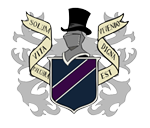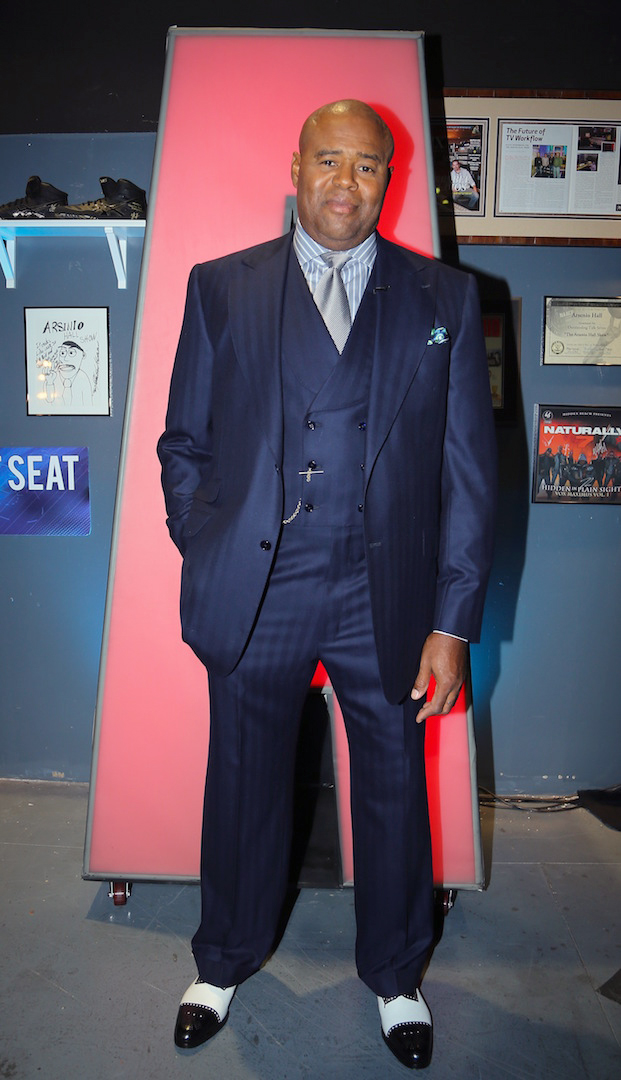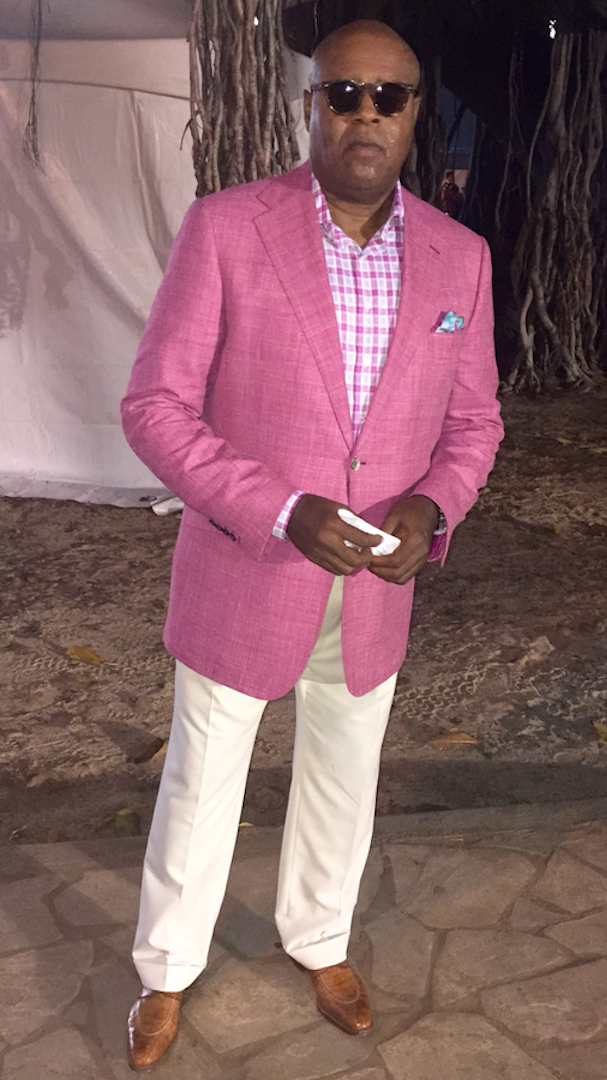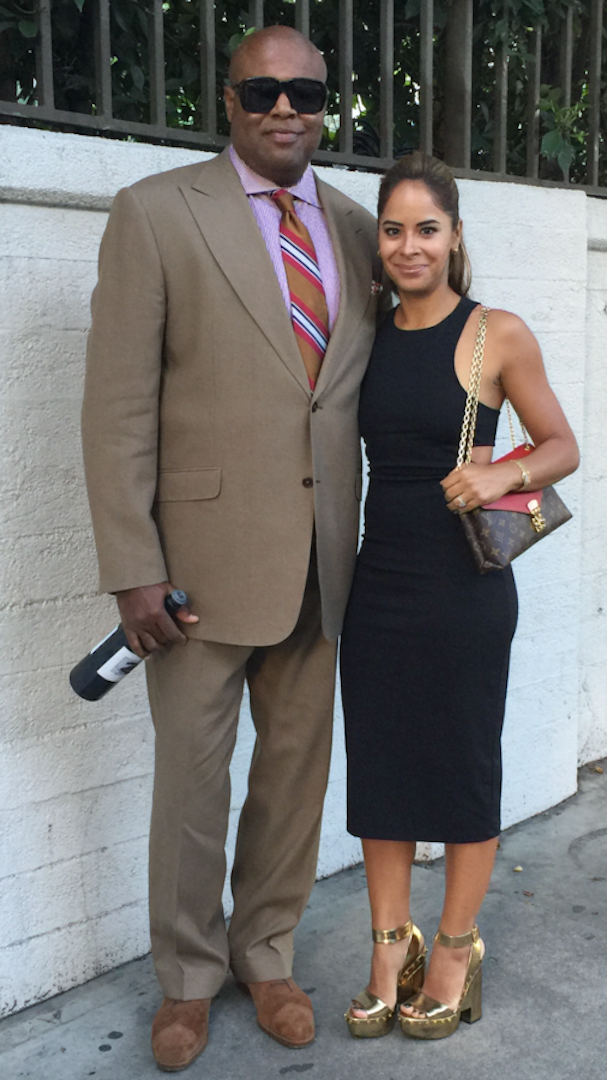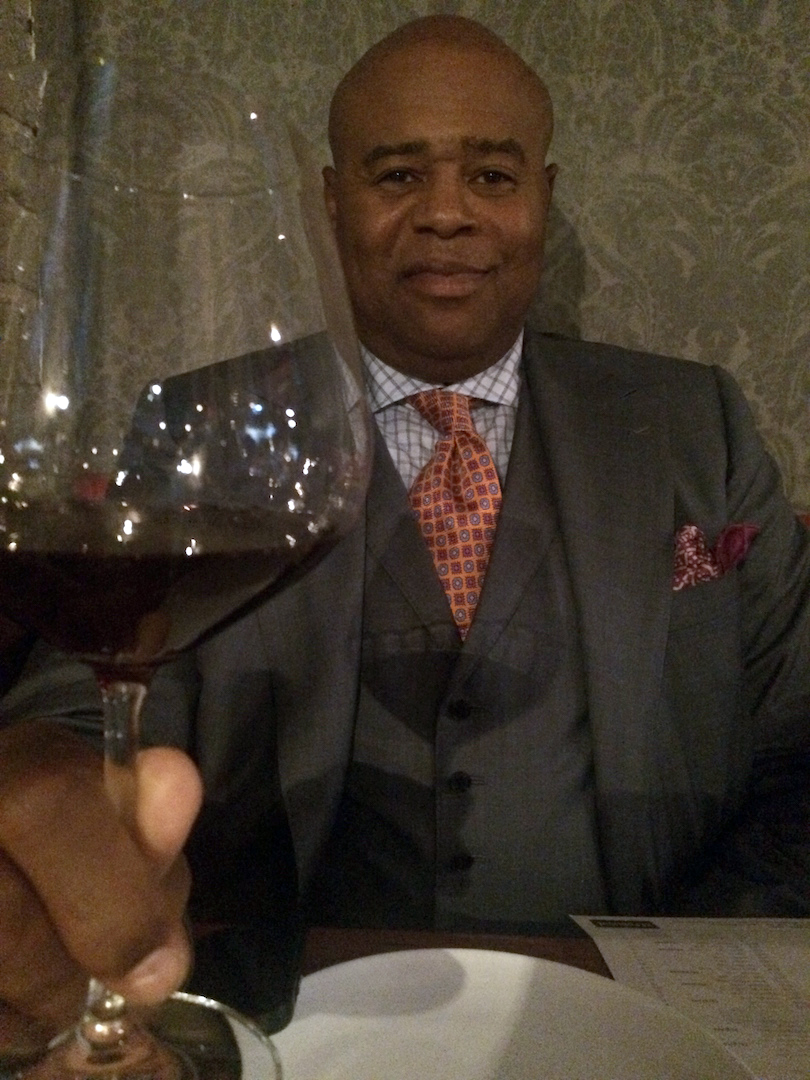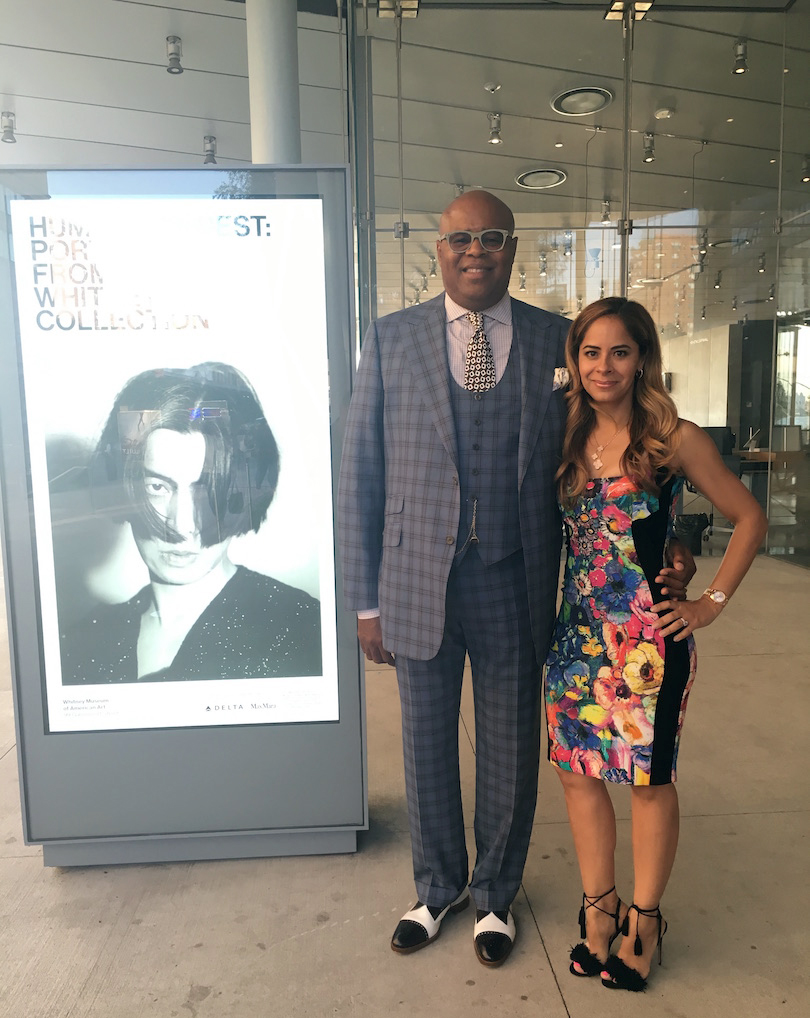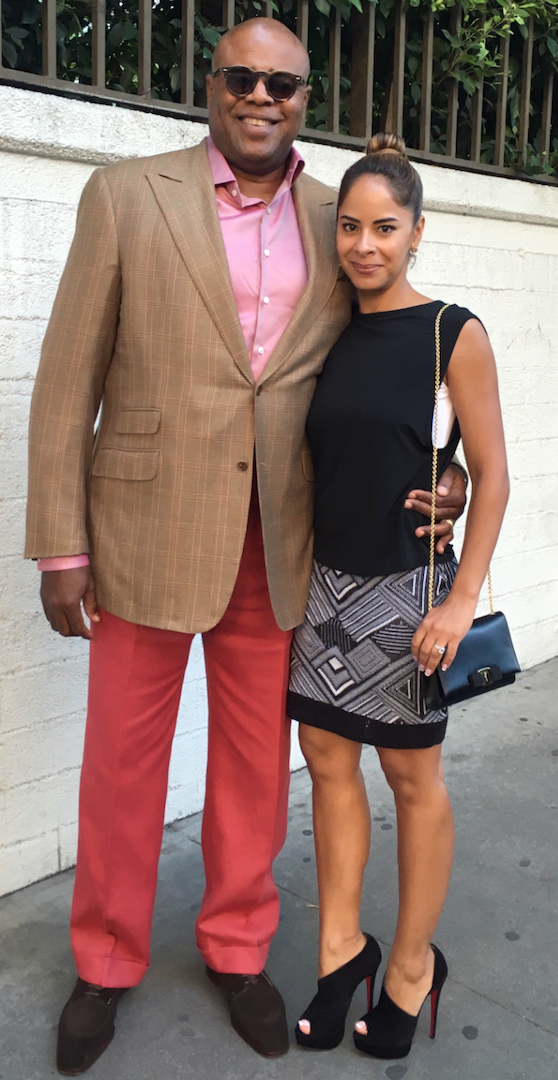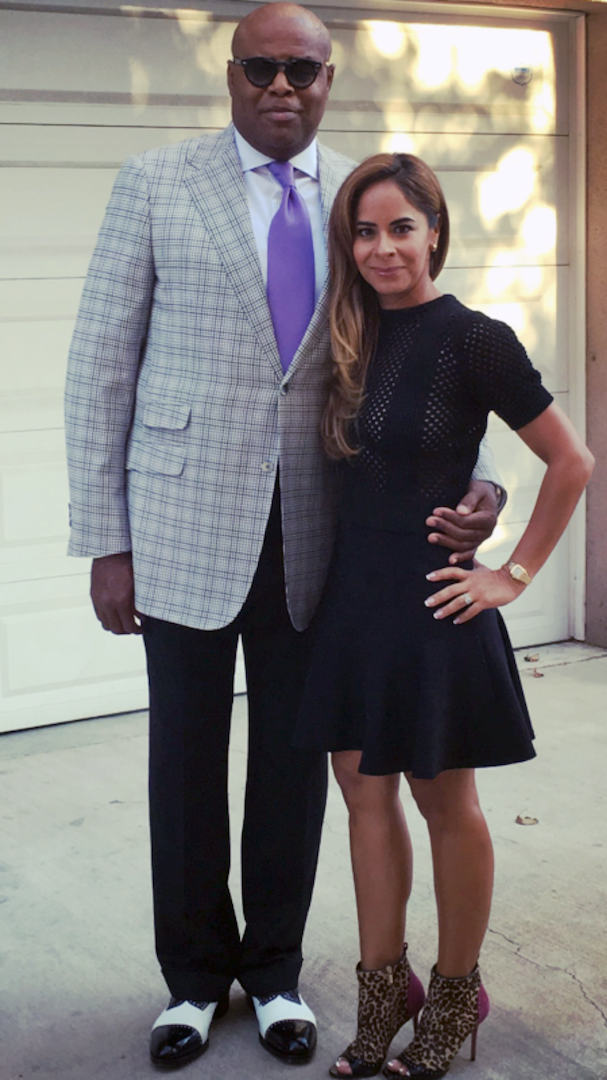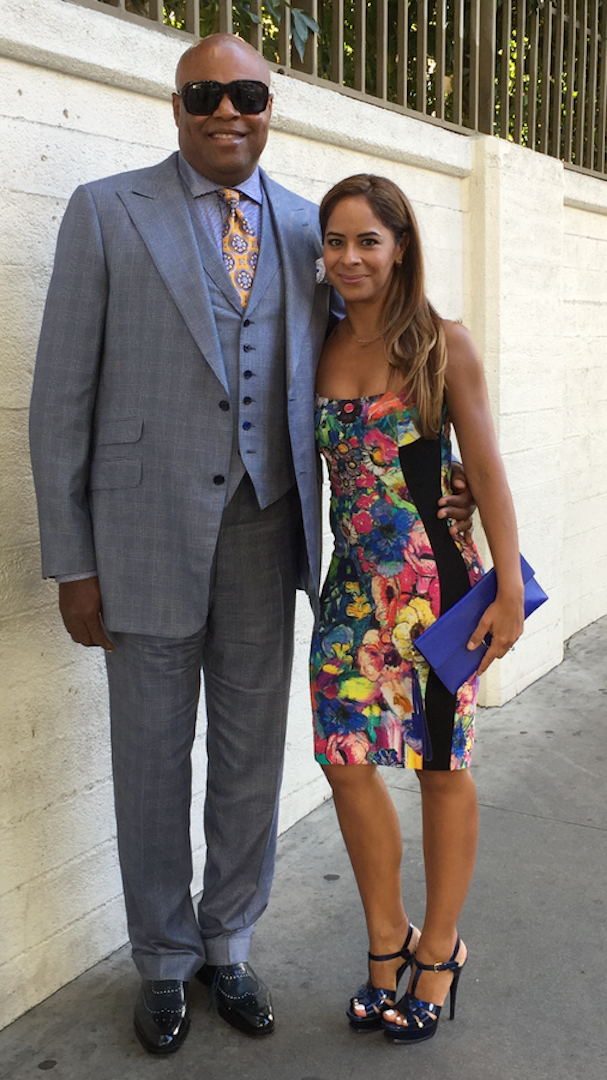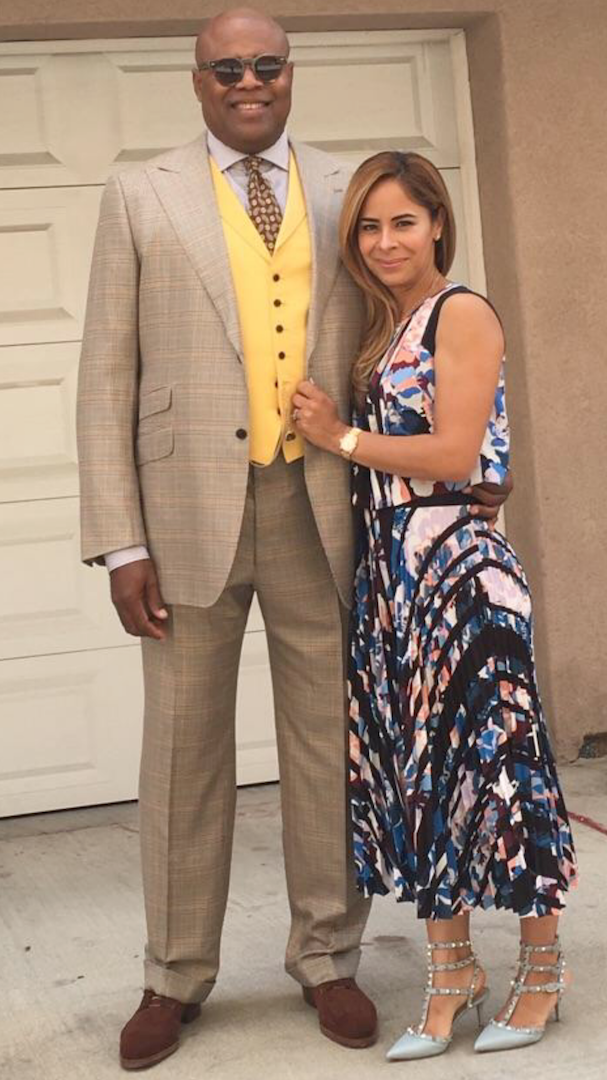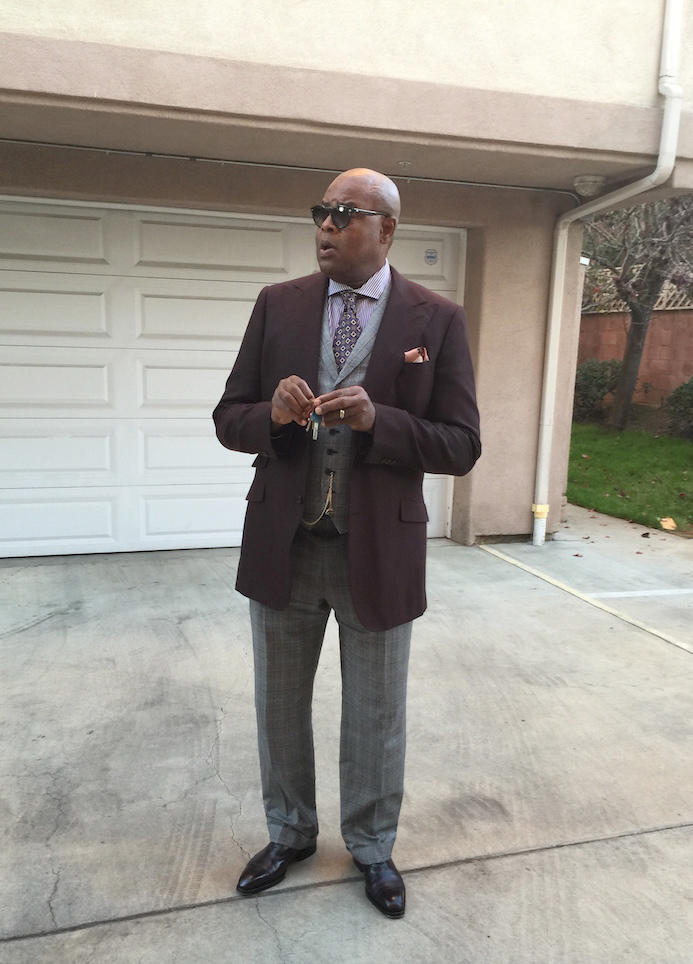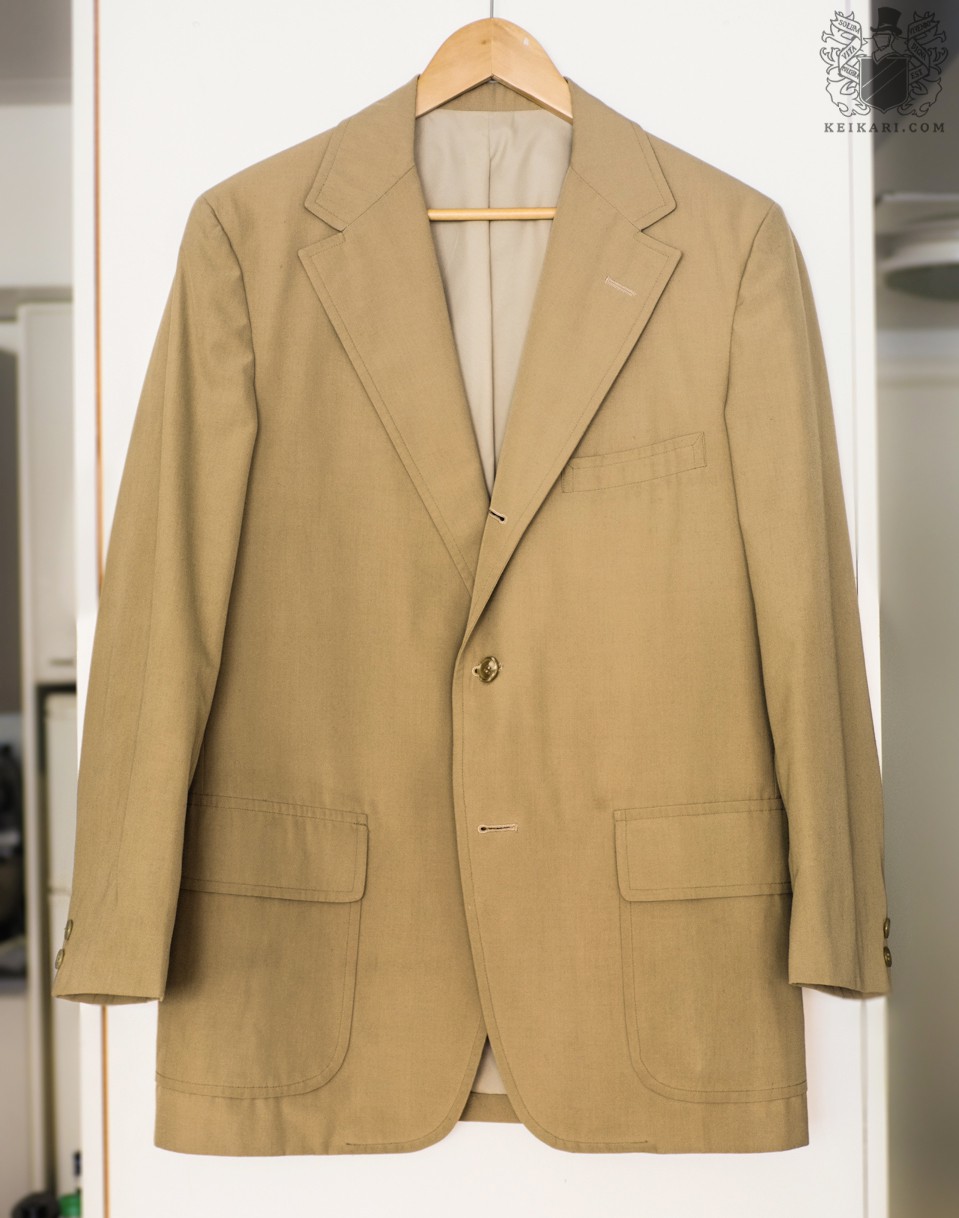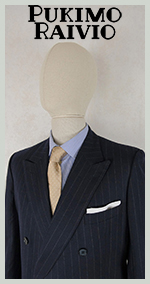Alison Schneider: Sometimes Clothes Make the Professor
0June 17, 2016 by Ville Raivio
Frumpy or Chic? Tweed or Kente? Sometimes Clothes Make the Professor
published in The Chronicle of Higher Education
23.1.1998
“There was just one problem with the English department’s job candidate: his pants.
They were polyester, green polyester, and the members of the hiring committee considered that a serious offense. For 10 minutes they ranted about the cut, the color, the cloth. Then and only then did they move on to weightier matters.
He did not get the job.
Neither did a woman lugging an oversized tote bag (too working-class). Or a man sporting a jaunty sweater and scarf (too flaky). Or a woman in a red-taffeta dress and cowboy boots (too — well, too much).
In the world of academe, where the life of the mind prevails, does it really matter if a scholar wears Gucci, gabardine, or grunge? What about good looks? Can such things tip the scales in a job interview, weaken a bid for tenure, or keep you off the A list on the conference circuit? Many professors say they can, although there is quibbling over the reasons why.
Talk about appearances might seem unjustified given the profession’s showing in the arena of good looks and good taste. “Academics are still the worst-dressed middle-class occupational group in America,” says Valerie Steele, chief curator at the museum of the Fashion Institute of Technology and editor of Fashion Theory: The Journal of Body, Dress & Culture.
But despite their threadbare reputation, scholars spend a lot of time thinking, talking, and writing about appearances. Last month, Elaine Showalter, an English professor at Princeton University, came out of the closet, so to speak, and admitted in Vogue magazine that she has a fetish for fashion. She waxed eloquent about her Cossack minidress and turquoise boots from Bologna. ‘For years,” she wrote, ‘I’ve been trying to make the life of the mind coexist with the day at the mall.’
She is not alone. Scholars squirm when the topic of appearance arises, but a growing number agree that even in the ivory tower, image and intellect are hopelessly intertwined.
‘I absolutely judge what people wear,’ says Wayne Koestenbaum, an English professor at the City University of New York’s Graduate School and University Center, who dabs on specific perfumes to pay homage to particular writers. (He declined to provide an example. ‘It’s much too personal,’ he says.) But ‘there are people who are excited as I am by certain ideas, certain artistic movements. There are semiotic codes of dress, makeup, and hair that say things about your allegiances.’
He should know. He dyed his hair red when he entered graduate school. ‘It was intimately connected to my intellectual advancement and my movement into feminist and gay theory.’
That sounds like self-conscious gobbledygook to some professors. When it comes to appearances, academe breaks down into two camps: pro-frumpy and pro-fashion. Fans of frumpiness insist that if you want to prove you’re intellectually a cut above the competition, think twice before parading around in an Italian-cut blazer.
‘If it’s a choice between being chic or frumpy, I think it benefits academics more to be frumpy,’ says Emily Toth, a professor of English and women’s studies at Louisiana State University. ‘If you look like you spend too much time on your clothes, there are people who will assume that you haven’t put enough energy into your mind.’ Dr. Toth, who doubles in her off-hours as Ms. Mentor — the Miss Manners of academe — has dished out pithy advice for years, first in a column for Concerns, the journal of the Women’s Caucus of the Modern Language Association, and now in a book, Ms. Mentor’s Impeccable Advice for Women in Academia.
As for the taffeta dress and cowboy boots — which Ms. Mentor saw for herself — such an outfit may signal that a scholar doesn’t grasp the right professional priorities, she says in an interview. ‘If you don’t know how to dress, then what else don’t you know? Do you know how to advise students or grade papers? The clothes are part of the judgment of the mind.’
Clothes also help determine if someone will fit into a particular institution. Ask around, and you’ll hear professors talk about regional norms for academics: The Midwest dresses down, the South dresses up. Tailored but casual wins the day in the Northeast, and anything goes in California — as long as it looks good. Not to mention the fact that individual universities have their own idiosyncratic norms, which professors ignore at their peril.
‘A lot depends on institutional context,’ explains Catharine R. Stimpson, dean of the graduate school of arts and sciences at New York University. ‘At a small, fraught department, where everybody is out to get everybody else, they’d use anything — they could even use a little Liz Claiborne — as a sign of overreaching.’
Perhaps the biggest liability of looking too good is that colleagues and students may spend more time thinking about what a professor wears than what he or she says. When clothes become a distraction, the frumpiness faction contends, they do a disservice to young scholars who are trying to establish themselves in their field.
Men occasionally take flak for putting too much of a premium on their own appearance. People still talk about what Andrew Ross, the ultra-hip director of the American-studies program at N.Y.U., wore to the M.L.A.’s 1991 meeting: a yellow Comme des Garçons blazer, a Japanese hand-painted tie, and wedge-heeled suede shoes. Back then, Mr. Ross told The New York Times that the jacket was ‘a sendup of the academic male convention of yellow polyester,’ but these days he doesn’t care to comment. Little wonder. The outfit made him a legend in some eyes and a laughingstock in others.
Still, he says, ‘I don’t think it’s a bad thing that academics think more about their appearance right now, when the profession is under siege. It translates into a perception that they’re not otherworldly, that they don’t live in ivory towers, that they meet people where they are rather than tell them where they ought to be.’ His only fashion regret: removing his earrings when he went on the market. It didn’t even land him a job.
‘Dressing fashionably in academia is like clearing the four-foot high jump. The bar is not that high,’ says Michael Bérubé, an English professor at the University of Illinois at Urbana-Champaign. ‘Anything with some cut or color draws derision — and admiration — because the sartorial requirements of the business are so low.’
Mr. Bérubé may know whereof he speaks. He showed up at last month’s M.L.A. meeting sporting an electric-blue suit of 100-per-cent polyester. He loves the outfit: ‘It’s an amazing color, and it never loses its crease!’
A man may be able to pull off an electric-blue suit without raising eyebrows, but what about a woman? ‘I still think there’s a predisposition to take men more seriously,’ says Domna C. Stanton, a professor of French and women’s studies at the University of Michigan. Junior-faculty women face a particularly difficult quandary, she says. ‘How do they convey professional seriousness without looking like a man in drag?’
Here’s the short list of Ms. Mentor’s do’s and don’ts: For starters, younger women should play down their sexuality. Skirts should be knee-length or below. Pants are never appropriate for interviews. Steer clear of high-heeled shoes. Choose dark colors over light ones. Ms. Mentor recommends dark purple: ‘It looks good on everyone.’
But some people think playing by the rules is the riskiest move of all. ‘I don’t think frumpy gets you anywhere except forgotten,’ says Jane Gallop, a professor of English and comparative literature at the University of Wisconsin at Milwaukee. She’s made strong fashion statements for years. She wore velvet jeans and a sweater when she went on the job market; donned a now-legendary skirt made of men’s ties when she lectured on psychoanalytic theory and the phallus; and slipped into suede fringed pants and cowboy boots to talk about Western civilization.
She hasn’t toned down her look much since her junior-professor days. ‘I teach in torn T-shirts that I have actually torn myself,’ she says. And she still defends using clothing as conceptual art: ‘There’s a stupid impression that a lack of style signifies seriousness, but anyone who comes from a literary sense of things knows that style is often the best way to convey complicated things. You should use everything you have to make people think.’
Dr. Showalter agrees: ‘Teaching is performance. We use everything we’ve got, and costume is part of it. That’s not to say that you dress up like Emma Bovary, but a little liveliness is desirable.’
‘Give me a break,” replies Camille Paglia, a humanities professor at the University of the Arts. ‘Yes, teaching is a performance art. But when the teacher hijacks the classroom for self-display — of fashion or mannerism or cult of personality — we have a corruption of education. Professors think, “They’re here because of me, because of my wonderful whimsy, my wonderful way of doing things.” It makes me want to throw up.’ Ms. Paglia favors pantsuits for public lectures — she’s especially fond of her flowing, Donna Karan tuxedo suit — but sticks to simple slacks, a plain jacket, and rubber-soled shoes in the classroom.
What does all this sartorial sniping mean for scholars going on the job market and the people who are grooming them? Professors spend an inordinate amount of time fine-tuning not only what their proteges will say at interviews but also how they will look when they say it. Mentors criticize everything from the studs in the job-seekers’ ears to the shoes on their feet.
The result: Scholars hunting for jobs are expected to look far better than those who have one, says Nancy K. Miller, an English professor at CUNY’s graduate school. ‘I wonder if the emphasis on appearance at the hiring level isn’t a displacement of the real issue: that these students aren’t going to get jobs. We focus on their clothing as if the perfect suit or haircut, or the toning down of extravagant styles, will guarantee them a job.’ Alas, she says, it won’t.
The deconstruction of dress weighs particularly heavily upon minority professors. ‘There is a special turn of the knife for racial and ethnic women,’ says Nell Painter, a black historian at Princeton. ‘There are prejudices against people who look too Jewish, too working-class, too Italian, too black, or too much of anything different.’ She adds, however, that ‘if you look too WASPish, that’s probably all right.’
The stakes are high for blacks, Ms. Painter says, because nothing they do is neutral. ‘If you wear a pair of classic trousers and no kente cloth, that makes a statement. And if you wear kente cloth, that makes a statement.’
‘My difficulty with that,” says Karla F.C. Holloway, director of African and African-American studies at Duke University, ‘is that it makes the other parts of you invisible — your scholarship, your intellect, your seriousness.’ That’s why she favors formality. She doesn’t repress her African-American roots — she wears ethnic prints and wraps her hair in a braid, like her grandmother did — but she steers clear of casual couture. ‘Casualness has never been part of our professional demeanor,’ she says. ‘Maybe because we can’t afford to make it part of our professional demeanor.’
The most glaring exception may be Robin D.G. Kelley, a historian at N.Y.U. He does have some designer suits in his closet, but most days he pulls on a pair of black jeans, black combat boots, and a ‘contemporary’ — meaning ’50s-looking — shirt or sweater.
Students think he’s hip and approachable. But looking cool has its cost. ‘At every stage in my career, youth and informality — in dress, in appearance, in presentation — have been the bane of my existence. Professors take me less seriously.’
Fortunately, Dr. Kelley says he has found that ‘the one thing that speaks louder than dress is the work that you do.’
Hair, however, is something else entirely. ‘People lose their jobs over how they style their hair,’ he says. A big Afro is associated with late-’60s radicalism, while straightened hair signals that you’re a ‘serious sell-out white wannabe.’ Braids, dreadlocks, and shaved heads give the impression that you’ve got a chip on your shoulder. ‘When I had my hair short, I was a safe Negro,’ Dr. Kelley says. Now he’s growing dreadlocks, a decision that’s cramping his style when it comes to his current work, a book about Thelonious Monk. He’d like to don the kind of funky hats that the jazz pianist wore, but he can’t until his hair finishes ‘locking,’ he says. ‘It’s really messing up my vibe.’
Things are complicated in other ways for those professors — men or women, white or black — graced with exceptionally good looks. In academe, beauty is a double-edged sword. Scholars, like everybody else, sometimes assume that a sound mind isn’t likely to be accompanied by a sexy body.
Bennett Link, a physicist at Montana State University at Bozeman, posed bare-chested last year in the ‘Studmuffins of Science’ calendar, a tongue-in-cheek tribute to good-looking geeks. The attention over his appearance as ‘Dr. April’ has died down, but he admits that when the calendar came out, he wanted to keep it quiet.
‘The way a person looks doesn’t play much of a role in the sciences,’ he says. In fact, he adds, it’s a matter of pride among scientists to dress down. But image is critical. ‘It’s important to appear smart and competent. I wasn’t sure if the calendar would hurt my chances for tenure.’ (He went along with the idea after his girlfriend at the time had sent in the photos.)
Most people think good looks don’t hurt. ‘Generally, looking attractive helps you get a job,’ Ms. Gallop says. ‘It’s not supposed to be true — and it’s nothing that ever gets said — but prejudices operate against people who are seriously overweight or have bad skin or are really unattractive. It produces a kind of discomfort.’
As Ms. Mentor puts it, if A is the cream of the academic crop when it comes to looks, and F is ‘wolf man,’ then ‘wolf man does not get a job.’ Fortunately, she says, most scholars fall somewhere between B+ and D+. But then, she’s grading on a curve.”
Category American style, Reading, Vintage
A profile of bespoke shoemaker Dimitri Gomez
0June 13, 2016 by Ville Raivio
Category Cordwainers, French style, Videos
Interview with Chi McBride
1June 9, 2016 by Ville Raivio
VR: Your age and occupation?
CM: age 54, occupation actor.
Vr: Your educational background?
CM: Education: 1 year of college. College is like sushi. It’s not for everybody.
VR: Have you any children or spouse (and how do they relate to your style enthusiasm)?
CM: Married, Father of three. I rarely discuss my family in interviews.
VR: …and your parents and siblings’ reactions back when you were younger?
CM: My Uncle Raymond was my main fashion influence. He was always in a sportcoat or suit and he ALWAYS wore a Borsalino hat.
VR: What other hobbies or passions do you have besides apparel?
CM: My passions include collecting and drinking wines, fine dining, cigars and golf.
Vr: How did you first become interested in style, and when did you turn your eyes towards the classics?
CM: I first became interested in style from my favorite uncle, as well as watching films starring Cary Grant, Rex Harrison, Humphrey Bogart, William Holden and George Raft. I probably began really eyeing the classics as an influence beginning in my teen years. I also consider the book Dressing The Man by Alan Flusser an undeniable influence on my own personal style.
Featuring the lovely Julissa
VR: How have you gathered your knowledge of the tailored look — from books, talks with salesmen or somewhere else?
CM: One of my most memorable influences was a salesman for Neiman Marcus that I met in my late 20s by the name of Jance Reynolds. Jance was always impeccably dressed and was a GENIUS at mixing patterns. His influence on me was his classic style, but most of all he influenced my style by teaching me how to steer clear of “the safe look”, as he once said. The next time you’re out in a park, look at the way the colors of nature blend in ways that incorporate unlikely color match-ups, and yet, it all works. It was a profound discovery for me to compliment my accessories, ties, pocket squares, etc., choosing to match the square with a color in the shirt instead of the suit, for example. It became a fun challenge to find “unsafe” choices, when putting together an outfit.
Vr: Which tailors or RTW makers do you favour and why?
CM: My fabric supplier and tailor are somewhat of a guarded piece of information. My Uncle Raymond, who was as old school as they come, once said to me when I was very young: “Never loan anybody your pen, your car, your tailor or more than twenty bucks.” So, I never do. However, I will say why I favour them is because they’re both extremely knowledgable about their business, wonderful collaborators, have razor-sharp sense of style and are two of my dearest, closest and most valued friends. Being 6’5″ with a generous frame, the RTW market, for me, aside from some pocket squares and socks, is closed. Unless, I’d prefer shopping at the local “Big Man” shop, which I do not. So, I’ll give you some of the MTO/bespoke makes that I prefer.
MTO/bespoke
My personal Fabric provider and my personal tailor: Suits, shirts, sportcoats, slacks, topcoats, outerwear and formalwear
Socks: William Abraham
Shoes: Saint Crispins, Edward Green, Koji Suzuki, Barbanera
Ties: Patrizio Cappelli
RTW
Pocket Squares: Hermès, Kiton, Drake’s, Charvet, Tom Ford, Cesare Attolini
Suspenders: Trafalgar
RTW as well as MTO eyewear: Morgenthal-Frederics
Cufflinks: Deakin&Francis, Micheal Kanners, Kieselstein-Cord, Cartier (vintage), Thrift shops
Ties: Robert Talbott
As for why, the same goes for all. In my opinion, they are the best.
VR: How would you describe your personal style?
CM: If I were to describe my style, I would call it a modern update of 1940s jazz musician’s style. Another style influence that I think very highly of in terms of his personal style is a doctor by the name of Dr. André Churchwell. Google him. All I can say is, Wow. When I grow up, I wanna be like him.
VR: Have you any particular style or cut philosophy behind your items?
CM: My style or cut philosophy? I don’t know if I’d call it a philosophy, however, there are some things I always consider as a rule.
1. Dress for the WEATHER, not for the season. If it’s 85F degrees outside on Christmas Day, I’m wearing white pants, and white shoes.
2. Always take one thing off before settling on an outfit.
3. Spend money on the best shoes you can afford.
4. There’s no such thing as too many shirts, ties, or pocket squares.
5. A stylist can’t give you style.
VR: Who or what inspires you?
CM: I am inspired by any craftsman. As simple as that sounds, it takes a lot to be recognized as a craftsman in the truest sense of the word.
VR: What’s your definition of style?
CM: Style, in my opinion, is simply being confident and comfortable in your own skin and enjoying your own company, when no one else is around.
VR: Finally, given your knowledge on the subject, how would you describe the dress of American male actors off-screen?
CM: Like I said. A stylist can’t give you style.
Photos: The McBride archives
Category Interviews, Men of style
A history of the 3-roll-2 cut
0May 29, 2016 by Ville Raivio
The 3-roll-2 cut is a peculiar look that has been especially favoured by American clothiers in their jackets, suits and, occasionally, coats as well. The 3/2 jacket has three buttons on the chest, but only two of these have been cut for closing. A very long time ago the top two buttons could be closed, but on modern models only the middle one is actually used. The top-most third button is decorative and usually sewn on the lapel’s lowest point. In addition, these jackets are usually pressed to roll directly to the middle button. In text-form, this explanation is, of course, a bit addled but once the reader has seen one of these jackets, he will remember. Brooks Brothers, the most influential American men’s clothier, has told more about the cut’s history based on its archives. According to BB, the eccentric design was born at the beginning of the 1900s when young university students decided to have their 3-button jackets pressed to look like 2-button versions in force. During this time, the two button jacket was the so-called greatest fashion, but the young and hungry students couldn’t afford to renew their whole wardrobe. With steam and iron, the three-buttoned was altered to close like the two-buttoned. Following the students’ example, Brooks Brothers took to using the cut in their readymade clothing — and the model spread across the country.
The 3-roll-2 jacket is as fine and dandy as the rest of the models, though I consider it less plain and less formal due to the additional buttonhole on the lapel. On the 21st century, the cut is not widely seen in the selections of European clothiers. Perhaps this is due to traditions as the 3-to-2 was born and gained fame in America, and boys merely followed the example of their fathers. In the Ivy League school of style, the cut was an essential part of most jackets and suits. The cut spread to the other side of the Atlantic on the shoulders of tourists and travellers, but for one reason or another it didn’t gain as great a following in Europe. Some Italian tailors vehemently favour the look, but big factories have not fallen for it in droves. Ultimately Brooks Brothers also chose to use the 3-roll-2 look in their legendary number one sack suit, which became one of the most sold men’s suit models in the United States. Consequently, and with a stable mind, I choose to call this cut as American as apple pie, jeans, T-shirts and free market economy.
Photographic image: Mr Lauri Hilliaho
Category American style, Coats, Jackets, Suits
Copyright © 2013 Ville Raivio
